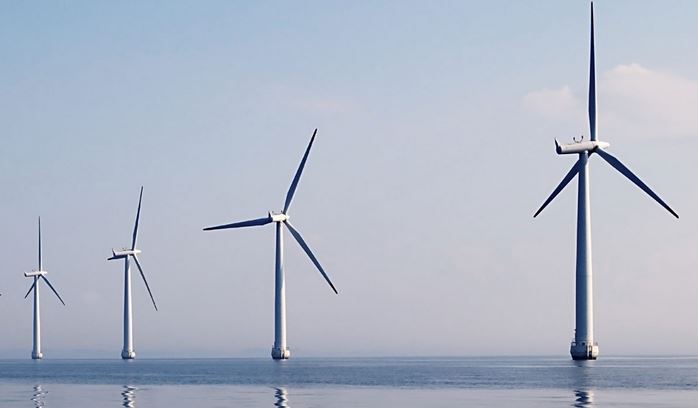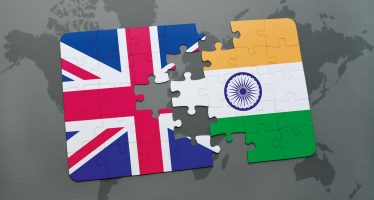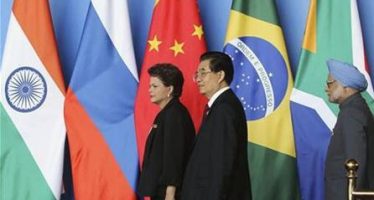World Bank: Asian Countries are among Top Achievers on Sustainable Energy Progress
 Asian countries are making a vital contribution to achieving global sustainable energy goals, a new World Bank report finds. But while the region performs strongly on ensuring electricity access for people and using more modern renewable energy, there is room for further improvement on energy efficiency and access to clean, smoke-free cooking.
Asian countries are making a vital contribution to achieving global sustainable energy goals, a new World Bank report finds. But while the region performs strongly on ensuring electricity access for people and using more modern renewable energy, there is room for further improvement on energy efficiency and access to clean, smoke-free cooking.
The report is the second in a series that tracks the world’s progress toward the three goals of the Sustainable Energy for All (SE4All) initiative—universal energy access, doubling the global rate of improvement in energy efficiency and doubling the share of renewable energy by 2030.
While the first edition from 2013 measured progress between 1990 and 2010, this edition focuses on the 2010-2012 period.
Asia accounted for about 60 percent of the global progress on energy access and clean energy objectives during 2010-2012 — according to the report titled “Progress Toward Sustainable Energy: Global Tracking Framework 2015” — contributing well beyond its share of global population and energy consumption.
“Whereas globally, consumption of modern renewable energy grew by 4 percent per annum during 2010-2012, in Asia that growth was almost twice as fast at close to 8 percent.”
Asia’s performance on expanding modern renewable energy (from sources like solar, wind and geothermal) was particularly strong. Whereas globally, consumption of modern renewable energy grew by 4 percent per annum during 2010-2012, in Asia that growth was almost twice as fast at close to 8 percent.
Asia also moved rapidly to expand access to electricity for its citizens growing the population with electricity by 0.9 percent annually over the tracking period 2010-2012, well ahead of the global rate of 0.6 percent.
And while the global population with access to clean, modern cooking fuels actually fell during 2010-2012, Asia showed a modest improvement in access, but still far short of what is needed.
However, Asia’s progress on reducing the energy intensity of its economies with a compound annual growth rate of 1.3 percent annually—a commonly used measure of energy efficiency—lagged behind the global average of 1.7 percent.
Some of Asia’s larger economies are critical to the global effort to reach Sustainable Energy for All. The report highlights some strong performances during the 2010-2012 tracking period including:
- India, Philippines and Bangladesh were the strongest performers on electricity accessand added around 4 percentage points to electricity access rates.
- Vietnam and Indonesia were particularly strong on access to clean, modern cooking fuels, and added around 3-4 percentage points to their access rates.
- Japan and Indonesia stood out in reducing their energy intensity (commonly used as an indicator of energy efficiency) by a compound annual growth rate of around 5 percent.
- Australia and China increased their renewable energy shares by about 1 percentage point each.
On a global basis, the report found that 222 million people worldwide got access to electricity between 2010 and 2012, still leaving 1.1 billion people without access to energy. Meanwhile, 2.9 billion people are still using biomass fuels like wood and dung. Most of this population is in rural areas of Sub-Saharan Africa, South Asia, and eastern Asia.
Also, while the world avoided using as much energy in 2012 as Japan used the same year, the report says energy intensity must decline at least 50 percent faster to achieve the SE4All energy efficiency goal.
Global consumption of modern renewable energy accelerated by 4 percent per year between 2010 and 2012, but must be closer to 8 percent—two times the current rate—to reach the SE4All renewable energy goal.
“We are heading in the right direction to end energy poverty,” said Anita Marangoly George, Senior Director of the World Bank’s Energy and Extractives Global Practice, “but we are still far from the finish line. We will need to work a lot harder especially to mobilize much larger investments in renewable energy and energy efficiency. Leveraging public finance to mobilize private capital is imperative in achieving these goals.”
The Sustainable Energy for All Global Tracking Framework is produced jointly by the World Bank’s Energy and Extractives Global Practice, the World Bank’s Energy Sector Management Assistance Program (ESMAP), and the International Energy Agency, and is supported by 20 other partner organizations and agencies. Source
You may have an interest in also reading…
Lord Waverley: PM Should Appoint Envoys If UK is Serious About Free Trade Agreement with India
Every community in both countries stands to benefit from an accord that will stand the test of time and be
BRICS Countries Crystalize Spirit of Practical Cooperation at Delhi Summit
By Xinhua writers Liu Chen, Mao Xiaoxiao, Wu Qiang As the Fourth BRICS leaders meeting drew its curtain Thursday in
Ann Low, National Defense University: Excellence in Government through User-Centric Design
Around the world a revolution is occurring, not one of violent upheaval, but one of excellence. Estonia and New Zealand



















































































